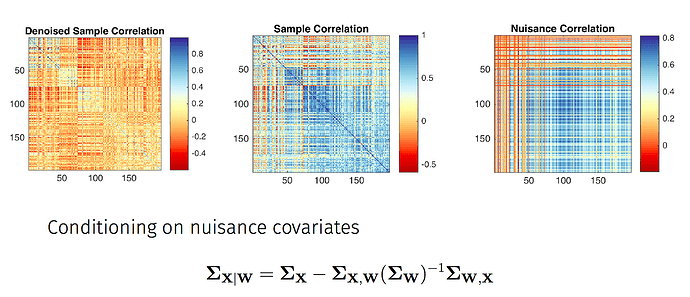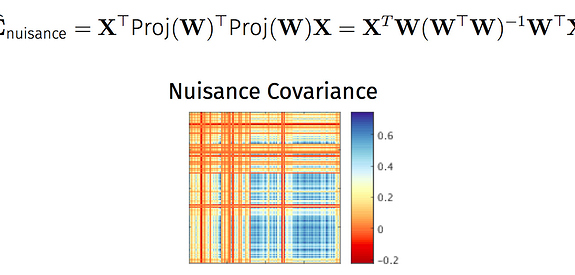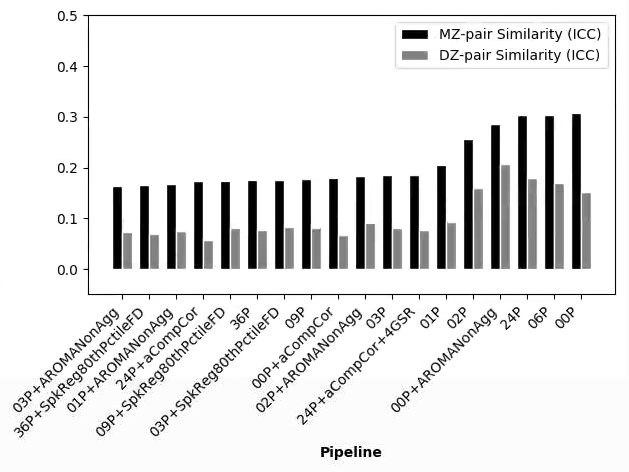Thank you again @fMRIstats for sharing your insightful paper. I have re-run a couple versions of my pipeline to test the effects of sequential (regression of 6 motion parameters, followed by high-pass filter) versus simultaneous (regression of 6 motion parameters and stop-band regressors) de-noising procedures.
Sequential motion regression–> temporal high-pass .009 Hz:
Simultaneous motion+stopband (.009 Hz) regression:
As evidenced by the plots, regardless of the sequential vs. simultaneous method taken, the association (-log[p]) between Functional Connectivity strength and Frame-wise Displacement is greater when the 6 motion regressors are included (labeled “06P”) versus when they are not (“0P”). I do not point this out to disagree with the arguments made in your paper, but rather I don’t think this to be the bases for the anomalous findings in my data.
I wonder if spatial smoothing (and/or ROI time-series extraction, another form of spatial smoothing) following motion/stop-band regression might introduce noise? E.g., although the time-series of one voxel might be orthogonal to motion parameters, might averaging it with its neighbor reintroduce some association with motion? Is the “best bet” to smooth before motion regression? Or rather to conduct the motion regression on the extracted ROI time-series? I am working on a way to test my speculations, but if anyone has any insight into this question, it would be greatly appreciated!
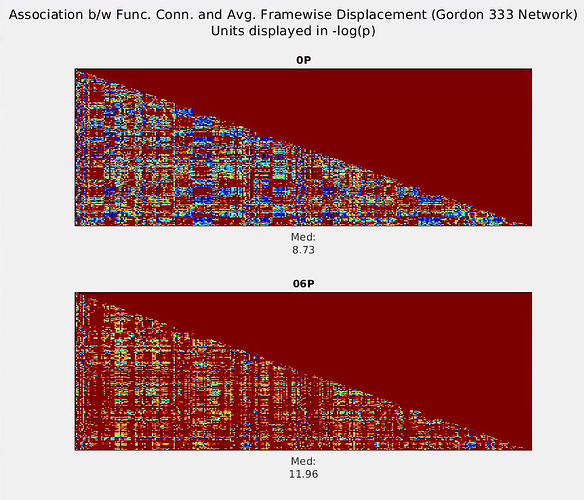
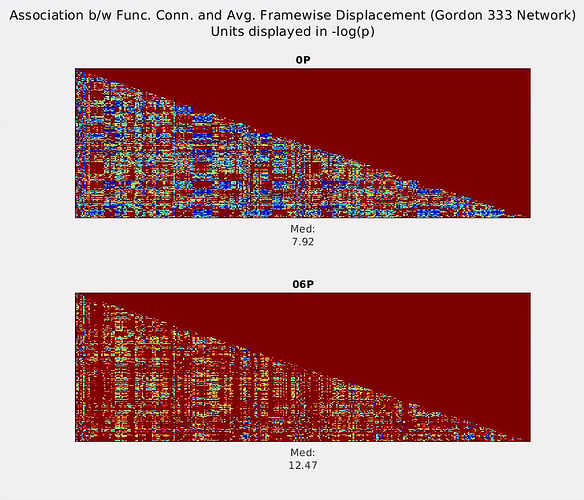
 ).
). 

